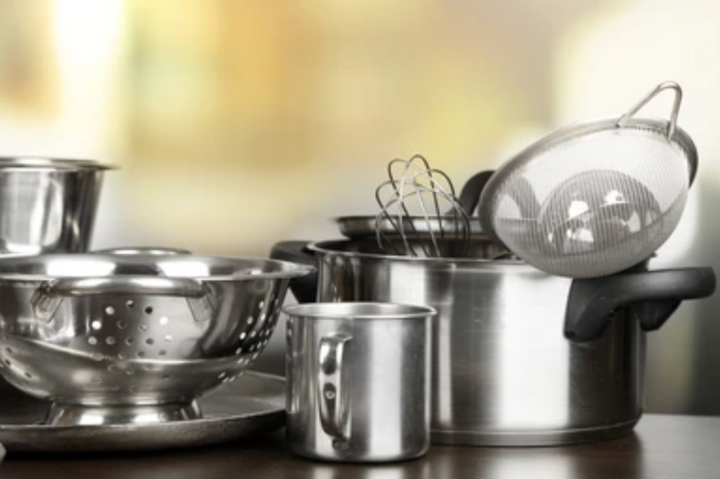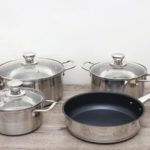Inox 304 and inox 316 are both common materials used to manufacture household appliances such as stainless steel pots, rice cookers, plates, spoons, chopsticks, or cooking utensils… Many people ask, should we buy household items made of inox 304 or 316? The price of inox 316 is always higher, so does that make it a better choice?
Should we buy household items made of inox 304 or 316?
To answer this question, you need to know the advantages and disadvantages of each type of inox.
Inox 304 (or Austenitic stainless steel) is the most widely used inox in everyday life. Its main components are chromium alloy (18% to 20%) and nickel (about 8% – 11%). A high nickel content gives 304 steel anti-corrosion properties.
Inox 316 (SuperAustenitic stainless steel) is also a chromium-nickel alloy but with an additional 2% molybdenum. The molybdenum content gives 316 steel better corrosion resistance, especially against acid and alkali, and a shinier appearance.

Many people are wondering whether to buy household items made of inox 304 or 316. (Image: Shutterstock)
Regarding the advantages, inox 304 has a high hardness compared to ordinary steel, high corrosion resistance, and is not affected in environments exposed to various types of chemicals. With these characteristics, it is widely applied in the industrial sector, food processing industry, household appliances… Another outstanding advantage of this type of inox is its good heat resistance, easy processing, and low production cost.
Inox 316 has similar properties to inox 304, but it has superior corrosion resistance, particularly against acid and alkalis. Its shinier appearance is due to its higher brightness. In harsh environmental conditions such as seawater, acid, alkali, chemicals, inox 316 is more resistant to rust and corrosion than inox 304. That’s why it is applied in the production of medical equipment, machinery, petroleum…
As for the disadvantages, although inox 304 has high corrosion resistance, it can be corroded and discolored over time in specific environments such as saltwater and environments with high acidity.
On the other hand, inox 316 has the disadvantage of being more expensive, with a higher melting point than inox 304, resulting in high production costs and lower strength than inox 304.
So should we buy household items made of inox 304 or 316? If your family wants to save costs and does not require high appearance standards, inox 304 is a good choice. Inox 304 fully meets safety standards when used for cooking and daily eating.
But if you have the economic conditions and high demands for luxury, aesthetics, and durability of the product, you should choose inox 316 because it still looks beautiful even in highly acidic or salty environments.
According to VTC






































